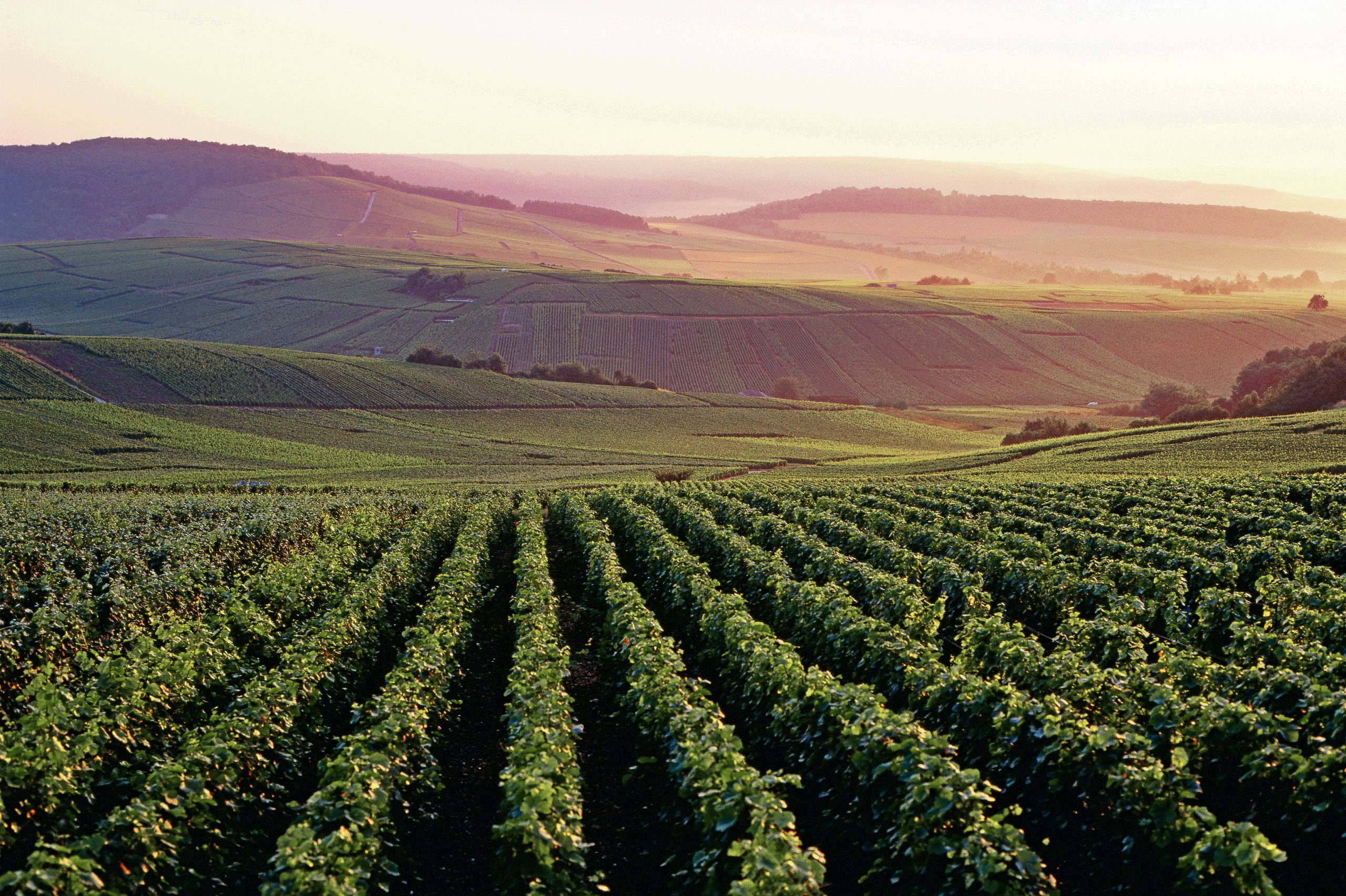Can you make sparkling wine in Texas?
Texan sparkling might be in its infancy but it could just help to write the next chapter of the state’s wine story, writes LM Archer.

“Texas is the fastest growing wine state in the country for a reason,” says Dr. Akhil Reddy, CEO of Reddy Vineyards in Brownfield, Texas. His father, pioneering agronomist/viticulturist Dr. Vijay Reddy, established the family estate in 1997 upon the Texas High Plains.
“We’re reaching critical capacity for grape growing, and now a large growth rate of wineries,” Reddy says. “Sparkling is a part of that, and will continue to grow as clients prefer locally produced, small batch wines with a sound story.”
But first Texas bubble makers must battle misconceptions, microclimates, and a miscellany of grape choices.
Misconceptions
What misconceptions, exactly? “The same misconception people have about all Texas wines – that they may not hold up to other wines of the world,” says Randy Hester, winemaker/co-owner of C.L. Butaud in Austin.
Houston-native Hester founded his winery in 2014 with wife Brooke, after working in Napa for more than a decade.
“I make wines that I’m proud to serve on the same table with wines from Napa Valley, France, Spain, or any other great wine region,” he contends.
Beyond quality misconceptions, uncertainty swirls about the Lone Star state’s ability to even fashion fine fizz.
“One of the most common misconceptions people have is “oh, you mean a pét nat?,” and we have to explain what we mean by méthode champenoise,” says winemaker/co-proprietor Elisa Jones of Elisa Christopher Wines.
“When I married Chris, his favuorite wine was sparkling – and we drink sparkling wine every week at home, so we decided we really wanted to make traditional method sparkling in Texas,” she says. Jones, a former US intelligence officer, co-founded her 43-acre (17.4 ha) Texas Hill Country winery and estate vineyard with husband Christopher in 2022.
“I did not want to be just another winery in the Hill Country,” Jones insists. “I wanted to extend my passion for sparkling wine into making it.”
Microclimates
For the record, Texas does grow wine grapes suitable for sparkling wine.
“There’s so many different microclimates, and so many different geological features that are worlds apart,” says Chris Brundrett, co-founder and CEO of William Chris Wine Company (WCWC) in Fredericksburg. Brundrett co-founded WCWC with partner William ‘Bill’ Blackmon in 2008; WCWC bottled their first sparkling wines in 2012 and 2014.
Those different microclimates span five growing regions throughout Texas, comprising Texas High Plains and Panhandle, North Texas, Gulf Coast, West Texas, and Hill Country.
Many Texas sparkling wine producers favour growing and gathering grapes from Texas High Plains, Texas Hill Country and West Texas, which offer higher elevations, warm days, cool winds, and mineral-rich soils.
“Each of the three regions we get sparkling grapes from (Texas Hill Country, Texas High Plains, and deep West Texas) has unique features that contribute to the wines,” explains Seth Urbanek, WCWC Director of Wine Projects.
“The Texas Hill Country has quite a bit of limestone in its soils, giving them unique character and intensity,” he says. “The High Plains and West Texas are both very dry areas, keeping disease pressure very low, allowing us to farm them with little concern about diseased fruit.”
”Our vineyard is at an elevation of 3305 ft.(1007 m) – no humidity, dry heat, diurnal shift of cool nights, sandy loam, clay, limestone, and caliche,” says Reddy of his family’s 300 acre-plus (121.4 ha) estate, which grows 38 varieties. “All of these things, including high wind. The wind is our friend – if you get any moisture, it blows off real quick. And then you don’t have to spray for fungicides, or anything like that.”
But challenges do exist. “We’ve got freezing hail early on, [and] heat spikes can be a problem, especially during veraison,” says Reddy. “You can have certain varieties that will just get stunted, and not want to mature after that point.”
“Texas High Plains tends to be drier,” underscores Brian Heath, owner of Heath Sparkling Wines. “Risk of freeze and hail are big, but many vineyards now have freeze protection, wind machines, and hail netting.”
“In the Texas Hill Country AVA, freeze and hail can also be a big factor,” he admits, “But additional fungal/mildew pressure are common in May and June, due to fairly regular rains.”
Irrigation proves essential, regardless the region. “I don’t know if anyone who dry farms in Texas,” says Heath. “The heat is too consistent, and while some years have regular rain, others do not. Irrigating is absolutely necessary, not only to maintain the crop, but to keep the vines alive. “
In short, this ever-shifting, regional Texas-two step keeps sparkling winemakers on their toes.
“I think of it as like a blessing and a curse,” laughs Brundrett. “It’s so fun to play in, especially dealing with unique weather challenges across the state of Texas. But then it’s also probably the greatest challenge is just to effectively harvest – to farm, and cover, that many miles in the growing season.”
Partner Content

Miscellany of Grapes
Another misconception centres around grape varieties.
“The second [misconception] is that Texas cannot grow Chardonnay or Pinot Noir in Texas for sparkling,” says Jones.“Texas is the size of France – so yes, there are areas of the state that can grow these grapes – but we are also looking into other varieties that can work in the heat of Texas.”
A few Texas producers prefer traditional varieties. “I wanted the silky complex bubbles and wine complexity of méthode champenoise,” says Reddy. “So we decided to use Pinot Noir and Pinot Gris, since we grow both.”
But for the more adventurous, non-traditional varieties abound.
“We used Chardonnay, Chenin Blanc, Pinot Meunier, Mourvèdre, Sauvignon Blanc, and even a small lot of Tannat for our sparkling wines,“ says Seth Urbanek, Director of Wine Projects for WCWC, who helmed the winery’s sparkling programme in 2023.
Brundrett particularly favours Mourvèdre.
“ I don’t know if anybody makes sparkling Mourvèdre – it’s in a little bit more clay rich soil, so it always tends to crop a little heavier.”
Consequently, WCWC initiated a novel ‘red drop’ during veraison to control early-ripening bunches.
Meanwhile, Grenache proves the red grape of choice for Hester’s C.L. Butaud Blanc de Noirs Brut Nature.
“The goal here was to create a vivacious wine with a creamy texture, showing off the versatility of the Grenache grape, and embracing the fresh bread notes that will continue to evolve with time on the lees, typical of elegant sparkling wines.“
Others wow with white wine varieties. “Something that is really unique to Texas, that nobody else in the world is doing, is making Blanc Du Bois sparkling wine, a French American hybrid,” enthuses Brundrett.
Brundrett credits Elisa Jones of Elisa Christopher for pioneering the hybrid in Texas. Jones sources her Blanc Du Bois from her father’s vineyard in nearby College Station. “My dad grows Blanc du Bois – a hybrid grape – and I thought for years it would make an incredible sparkling wine,” Jones says.
Additionally, she crushed Pinot Noir, Chardonnay, Trebbiano, Grenache, Sangiovese and Vermentino in 2023-2024.
“Blanc du Bois will continue to be part of our program, as it is both disease and heat tolerant,” says Jones.” Every wine region in Texas has the potential for grapes that can be used for sparkling – some may be better on long aging programmes, and some on shorter aging programs but we will need to experiment to see what works best.”
Shiny Future
Ultimately, despite its relative youth, Texas sparkling wine continues its upward trajectory.
“William Chris, Reddy Vineyards, Elisa Christopher, and Heath Brands are laying a foundation for the Texas wine industry to consistently produce its own traditional method sparkling wine,” observes wine writer Amy Beth Wright.
“The range of grapes grown in Texas, and its range of diverse microclimates, makes for exciting prospects in this category, from traditional varieties to Rhône, Italian, Spanish, and Portuguese varieties grown in the state.”
Winemakers agree. “Texas sparkling wine is in its infancy, with no history of sparkling wine production to speak of,” says Urbanek. “We are at the very edge of the learning curve, but we are also helping to write the story for the future of Texas sparkling wine.”
“Texas has come a long way in the quality of the wine we produce. We have a great innovative and pioneering spirit that drives us,” Jones concludes. “Our diverse terroir and climate mean we have a vast range of grapes we can grow in this state, and wines we can make here. The future shines bright for Texas sparkling, and we cannot wait to show the world what we can accomplish.”
Related reading:
Why you should try sparkling wine from Uruguay
Could Prosecco have competition from Calabrian fizz?
Related news
Do wine lists still need the human touch?
Can wine compete with beer and baijiu in China?
Volatile first quarter for fine wine, but there is optimism on the horizon




